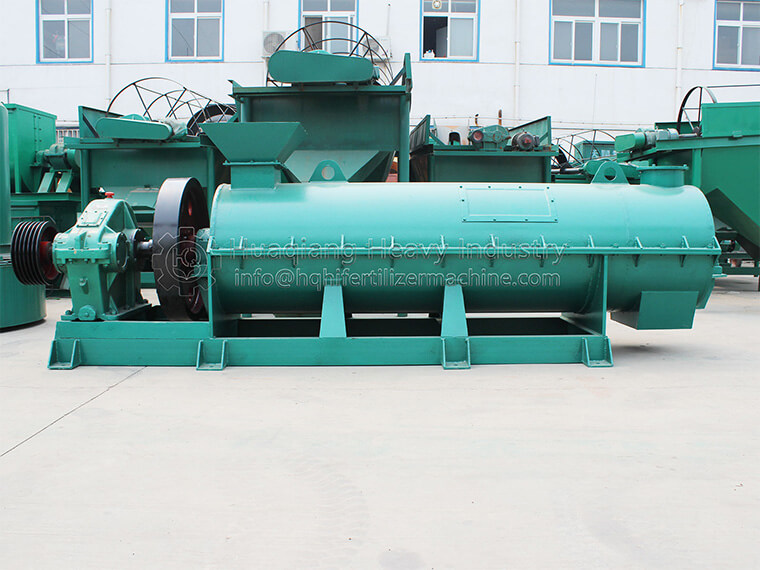Organic fertilizer production line fermentation animal manure to make organic fertilizer is aerobic fermentation, does not need to be closed, requires oxygen participation, release energy in fertilizer in advance, avoid burning roots during planting. The special bacteria of cow manure organic fertilizer can decompose various animal manure quickly, release the heat in fertilizer, and prevent the occurrence of root burning. After treatment with organic fertilizer equipment, macromolecular nutrients in manure that are not easy to be absorbed by plants can be decomposed by microorganisms. Decompose into more absorbable small molecular elements, improve fertilizer utilization. At the same time, the composting process can kill bacteria, eggs and parasites in the fertilizer, cutting off the source of pests and diseases. Cow manure organic fertilizer has the following characteristics:
1, improve the soil, fertilize. After organic fertilizer is applied into the soil, organic matter can effectively improve the physical and chemical conditions and biological characteristics of the soil, make the soil mature, enhance the soil fertilizer retention ability and buffering ability, and create good soil conditions for the growth of crops.
2. Improve fertilizer utilization rate. Organic fertilizer contains more nutrients, but the content is relatively low, and the release is slow, while fertilizer has high per unit nutrient content, less components, and the release is fast. The two applications are reasonable and complement each other. The organic acids produced by the decomposition of organic matter can also promote the dissolution of mineral nutrients and fertilizers in the soil. Organic fertilizer and chemical fertilizer promote each other, which is beneficial to crop absorption and improve fertilizer utilization rate.
3. Increase production and improve quality. Organic fertilizer contains rich organic matter and a variety of nutrients to provide nutrients for crops. After the decomposition of organic fertilizer, it provides energy and nutrients for soil microbial activities, promotes microbial activities, accelerates the decomposition of organic matter, and produces active substances that can promote crop growth and improve the quality of agricultural products.
Regardless of the history of fertilizer, biological fertilizers such as cow manure and organic fertilizers continue to advance. Microorganisms have the function of providing plant nutrition (such as nitrogen fixing genes, etc.), but they may not have the ability to decompose pollution (that is, genes that decompose substances).








